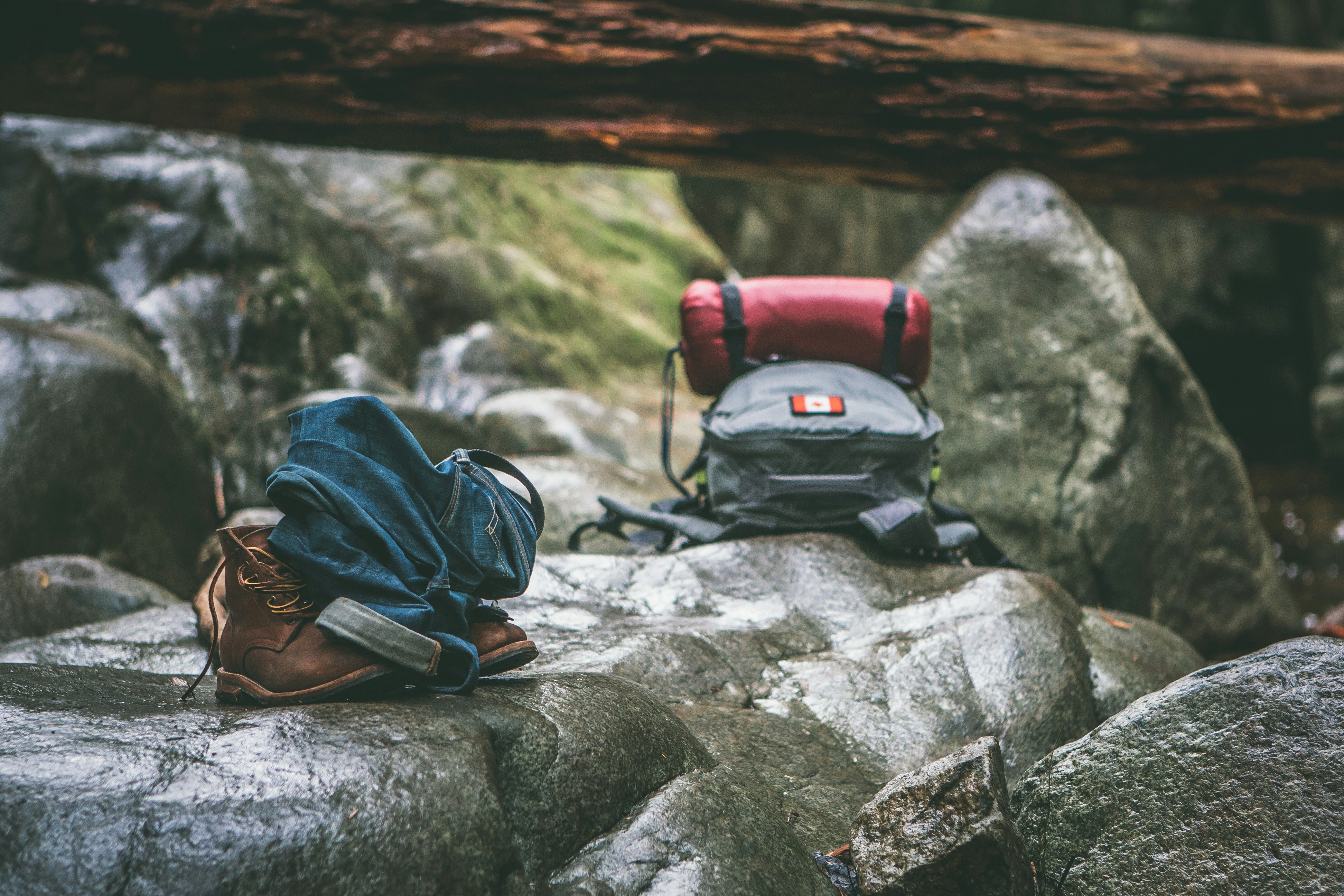Essential Rucking Gear (Excluding the Rucksack): Feet, Socks, Weights, Hydration, Safety
· 9 min read · rory@getrucky.com
gear beginner injury prevention

Everything you need to ruck—except the pack. This is the essential rucking gear checklist that keeps you comfortable, blister‑free, hydrated, and safe while you build capacity, one walk at a time.
New to rucking and wondering what to buy first? Start with essential rucking gear that actually moves the needle: proper footwear, blister‑proof socks, smart weights, simple hydration, and a small first‑aid kit. Excluding the backpack itself, these items reduce injury risk and make training repeatable—so you can go farther, more often. Use our Rucking Calorie Calculator and track workouts in the Ruck! app.
Footwear: Your First Priority
Foot comfort = ruck consistency. Choose based on terrain and distance; break in gradually.
- Hiking boots for uneven terrain or longer outings—ankle stability and grip.
- Trail runners or supportive trainers for urban/flat routes—lighter, more flexible.
- Insoles if needed: add volume control and arch support; test on short rucks first.
Why: Load carriage increases ground reaction forces and fatigue, which can amplify hotspots and gait changes—good footwear buffers that.1
Socks: Blister Prevention 101
- Merino wool or merino blends for moisture management and odor control. Darn Tough Vermont socks are excellent.
- Liner + outer combo (Injinji toe socks) to reduce friction; carry a spare pair for wet conditions.
- Padding at heel/toe; seamless toes minimize irritation.
Why: Friction blisters come from moisture + heat + shear. Moisture‑wicking fabrics and layered systems help—supported by military foot‑care research.2,3
Straps and Pack Accessories
Even without a new pack, small add‑ons can improve load distribution and comfort.
- Hip belt/waist belt (if your pack supports it): shifts load to hips on longer or heavier days.
- Sternum strap: stabilizes shoulder straps; reduces slip and collarbone pressure.
- Padded straps or sleeves: add cushion; test to avoid heat buildup.
- MOLLE pouches: stash phone, keys, tape, or snacks for access without unpacking.
Weights: Plates, Sand, or Household Hacks
- Ruck plates (10–30 lb): dense, stable; wrap with a towel to eliminate rattle. Yes4All ruck plates (we use and recommend these) or Yes4All adjustable plates work well.
- Sandbags: budget‑friendly and adjustable; double‑bag to prevent leaks. REP FITNESS sandbags are well-made.
- Household items: books, water bottles, dumbbells; secure high and close to the back panel.
- Weighted vest as an alternative: start at 5–10% body weight; progress time → weight → hills. CAP Barbell weighted vest is budget-friendly.
Why: Adding external load meaningfully increases energy expenditure at a given pace—turning your walk into training.4
Hydration and Fuel
- Hydration bladder (2–3 L) like CamelBak Crux reservoir or bottles: sip early and often; add electrolytes for heat/hills.
- Simple carbs + salt for sessions >60–90 min (chews, bars, or sports drink).
- Plan refills: route near fountains or carry a filter if you’re on trails.
Why: Dehydration impairs performance and heat tolerance; plan fluids by duration, temperature, and intensity.5
Injury Prevention and First Aid
- Leukotape/Moleskin for hot spots; pre‑tape known areas on long days. Leukotape P Sports Tape and Dr. Scholl's Moleskin work great.
- Mini kit: alcohol wipes, bandages, small scissors, pain reliever.
- Nail clippers + spare socks in a zip bag for wet or gritty routes.
Why: Load + time elevates blister and overuse risk—basic prevention keeps you training consistently.2,1
Clothing and Weather Protection
- Moisture‑wicking layers (synthetic or merino); avoid cotton next‑to‑skin.
- Gloves for grip and protection; hat for sun/rain.
- Light rain shell or poncho; add reflective accents for low‑light routes.
Other Helpful Accessories
- Trekking poles for steep or technical terrain.
- Reflective bands and a clip light for dawn/dusk visibility.
- Navigation: GPS watch/phone, map, compass, small flashlight or headlamp.
🎯 Quick Takeaways
- Feet first: Footwear + socks prevent most problems.
- Start light: 5–10% BW or 10–20 lb, build time before weight.
- Hydrate smart: Fluids + electrolytes scale with heat and hills.
- Tape hot spots: Leukotape/Moleskin avoids day‑ending blisters.
Frequently Asked Questions
What shoes are best for rucking?
A: Use hiking boots for uneven terrain or longer days; trail runners/supportive trainers for flat, urban routes. Comfort and fit beat brand names.
How many socks should I bring?
A: At least one spare pair for sessions over an hour in heat/rain. Consider a liner + outer sock combo to reduce friction and keep feet dry.
Do I need electrolytes?
A: For short, cool sessions, water is often fine. Add electrolytes for heat, hills, or sessions over 60–90 minutes to maintain performance.
What’s the smartest way to add weight without a ruck plate?
A: Sandbags are cheap and adjustable (double‑bag to prevent leaks). Books or water bottles work in a pinch—secure weight high and tight against your back.
Ready to Ruck Smarter?
Dial in your essentials and let consistency do the rest. Plan your effort with our Rucking Calorie Calculator and track progress in the Ruck! app. When you’re ready for pack upgrades, see our Rucking Backpack Guide.
Start light, protect your feet, and keep moving—simple wins.
Sources & References
Affiliate Disclosure: This post contains affiliate links. If you purchase through our Amazon links, we may earn a small commission at no extra cost to you. This helps support our content creation and app development. We only recommend products we've researched or would use ourselves.
Enjoyed this guide? Download the app to track your rucks, calories, and progress: iOS · Android